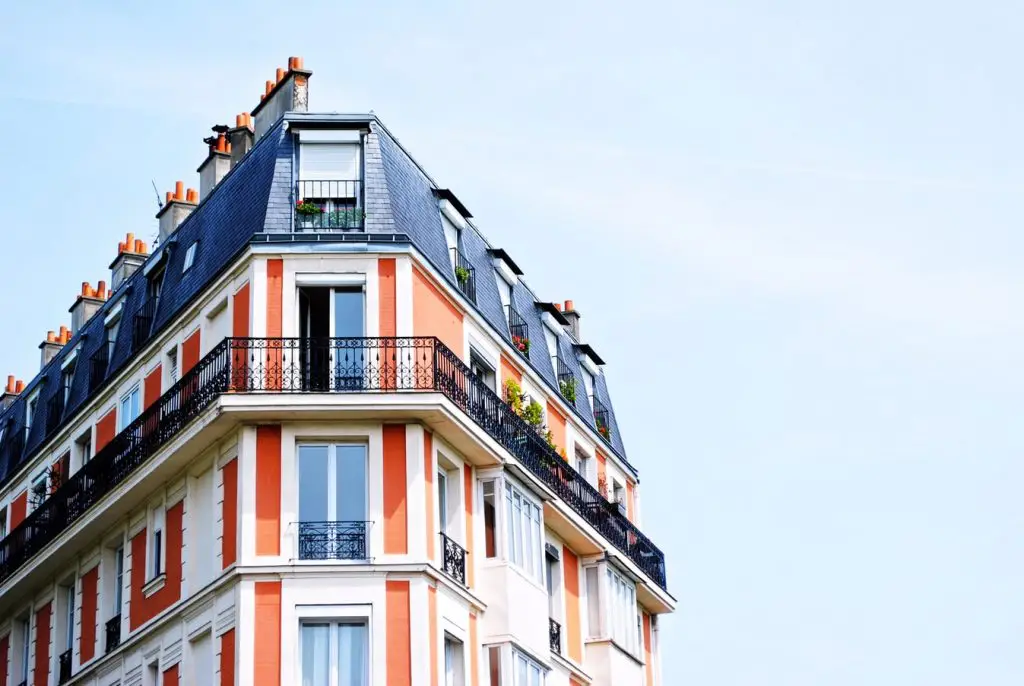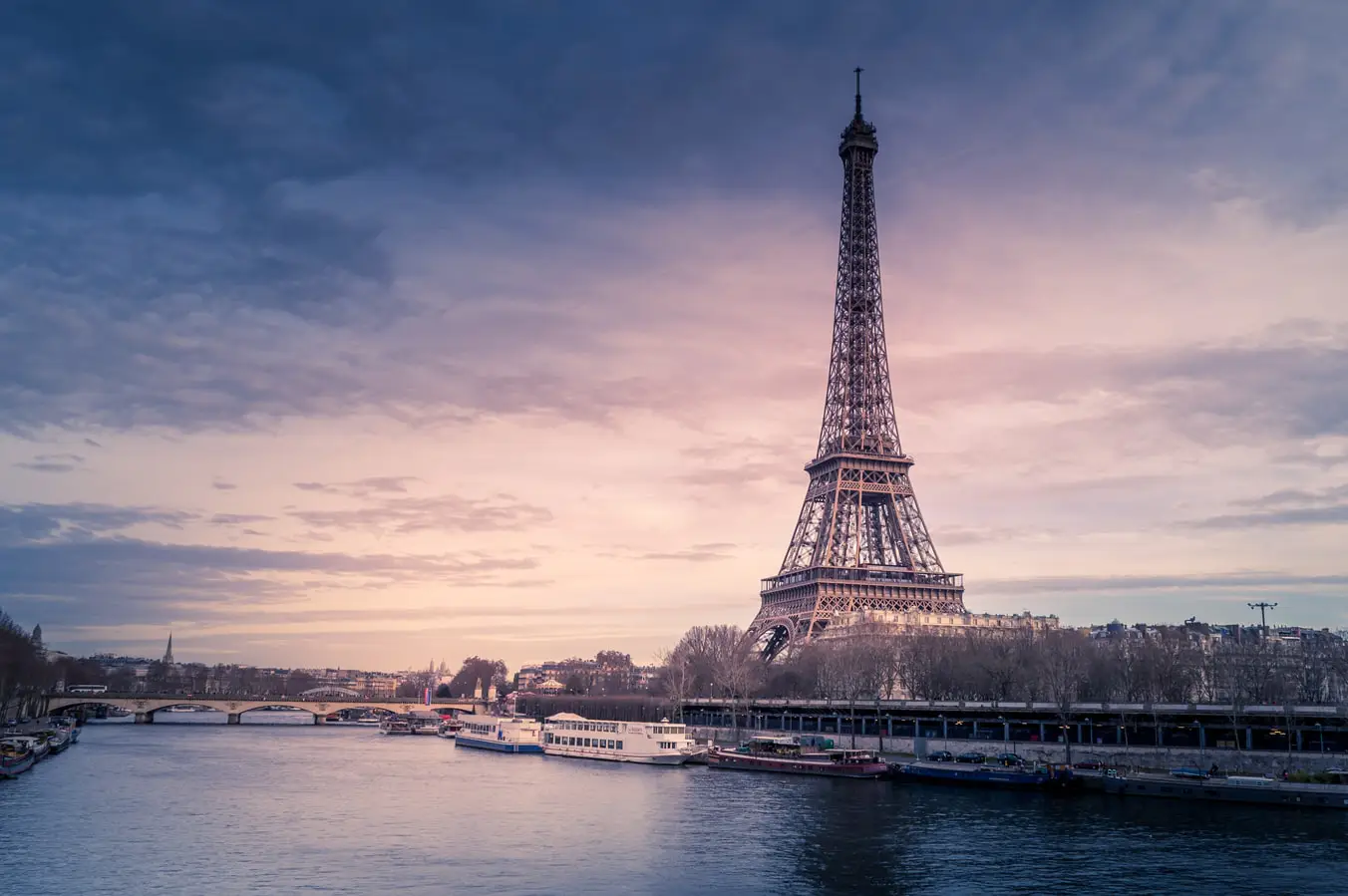Expert travel storyteller Jordan Adkins, founder of InspiredByMaps.com, brings a decade of adventures across 101 countries and 450+ UNESCO sites into rich, off-the-beaten-path narratives, melding ecological expertise with genuine, seasoned travel insights. His full bio can be found here.
Paris is arguably the most famous city in Europe, enchanting people from around the world and playing stage to stories and myths. It’s been the capital and most populated city in the French Republic since at least the 12th century, home to over two million Parisians.
The hotels of La Ville Lumière (‘The City of Light’) host over 23 million tourists per year, with many more spending only the day. You could spend a lifetime finding surprises in Paris, and days to see only the most iconic attractions.
But even with only one day in Paris, the near-overwhelming experience will be unforgettable.
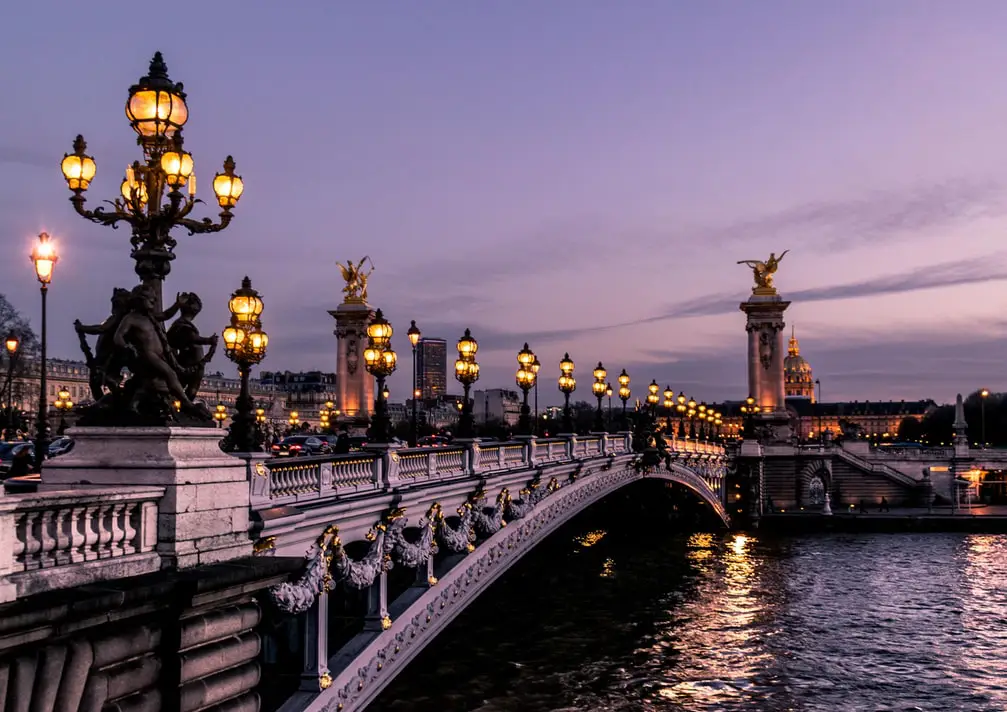
What To Do In One Day In Paris | The Ultimate 24 Hour Guide!
Page Contents
History And Character Of Paris
The region of Paris, on the banks of the Seine, was inhabited by the Parisii since at least the 3rd century BC. They were eventually found by the Romans, with the city becoming a prosperous trading hub. After the fall of the Empire, Paris fell under the control of the Franks, beginning nearly one thousand years of prosperity.
The Hundred Years’ War (1337-1453) saw control of the territory wrestled between the English and the French. During this time, Joan of Arc attempted to liberate the city in 1429, but was unsuccessful. Control of Paris would eventually return to the French kings and begin another 200 years of growth and prosperity.
Since the 17th century, Paris has been a major European center of finance, diplomacy, commerce, fashion, science, and the arts. This was further cemented by Cardinal Richelieu’s personal goal to make Paris the most beautiful city on the continent; he poured money into development and instituted strict urban planning laws and regulations.
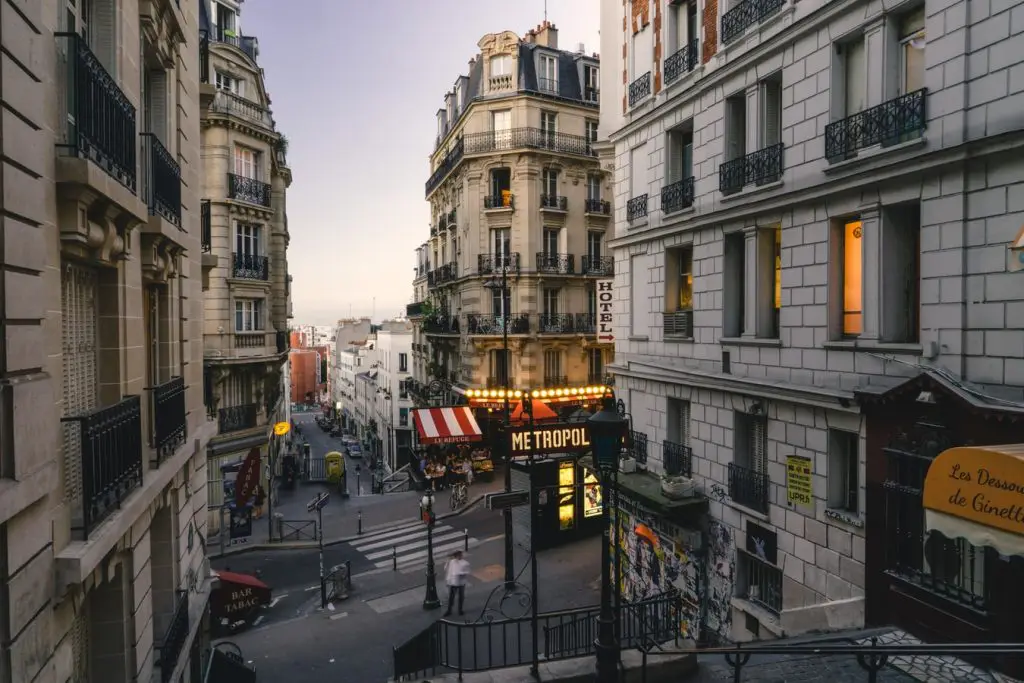
The Fronde civil war prompted the capital to be moved by Louis XIV to Versailles in 1682. Even after losing this status, Paris continued as the heart of France and continued to flourish. It played center stage in the Age of Enlightenment, the philosophical and scientific wave that would shape the modern, Western world.
However, with this prosperity came division and unrest; the Bastille was stormed on July 14, 1789, sparking the French Revolution.
The next hundred years would see two Napoleons, revolutions, Kings, Republics, wars and constitutions. All the while, Paris remained a bohemian dream, drawing such luminaries as Picasso, Proust, and Matisse. International expositions cemented Paris on the world map, with more than 3 million residents by 1901. The World Wars placed Paris on the frontlines, bombed and shelled, eventually invaded by the Nazis and held for four long years.
The Third Republic has since reigned in Paris, and France at large, since Allied liberation at the end of WW2. This long and chaotic history has given Parisians a fiercely nationalistic orientation and characterizes Paris as the icon of the French World.
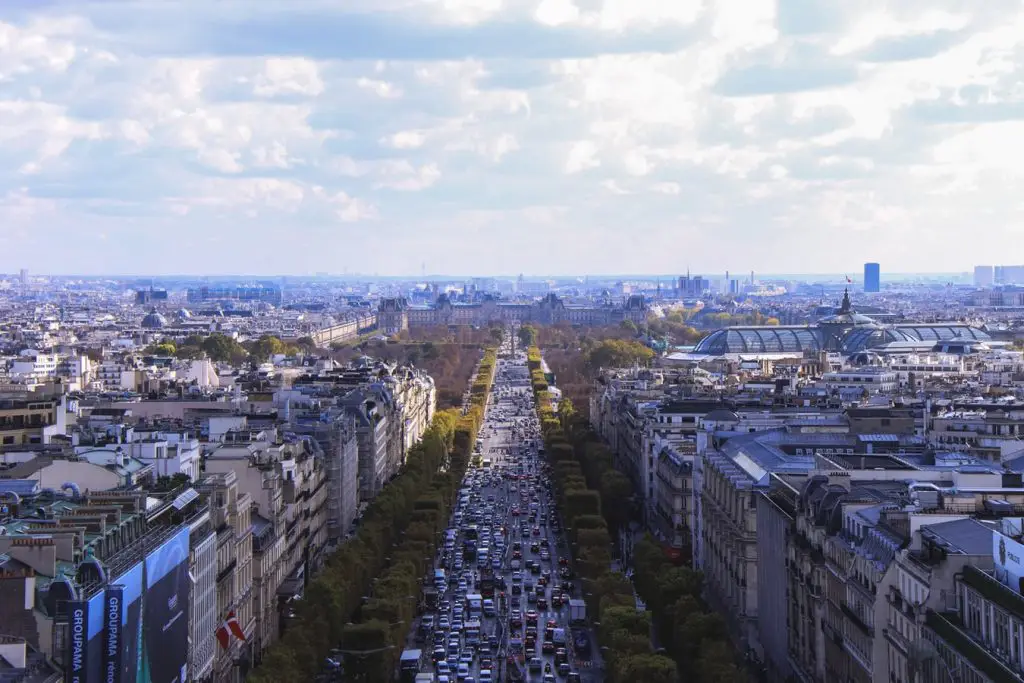
Geography And Climate Of Paris
Paris has expanded from small settlements on the winding banks of the Seine. Two islands at the center form the oldest part of the city: Île Saint-Louis and Île de la Cité. The rest of Paris expands outwards over a relatively flat area with a few prominent hills, Montmartre is the highest at 130 meters.
The city has an oceanic climate, similar to other typical western European tourist destinations. All four seasons are on full display, but the weather stays relatively mild and moderately wet year-round.
Summers are warm, sunny and pleasant, usually between 15-25C with a few days above 32C each year. Spring and autumn are unpredictable but generally have mild days and fresh nights. Winters are cool and rarely below freezing, but sunshine is scarce. Snow isn’t rare, but almost never accumulates.

Atmosphere And Approach To Paris
The atmosphere of Paris is best described as a fierce pride in being both French and Parisien, garnered by the long history described above. They’ve leveraged that history by orienting their city to accommodate the inevitable tourists; 10% of the city’s workforce directly supports tourism, while the vast majority of other residents work in commerce and services.
Unlike many other large cities in Europe, Paris has largely avoided outright catastrophe or destruction since the Middle Ages, resulting in a mind-boggling mix of architecture. From the Romanesque Abbey of Saint-Germain-des-Prés (1014) to the neo-Byzantine Basilica of Sacré-Cœur (1875), nearly a millennium of buildings and monuments are preserved.
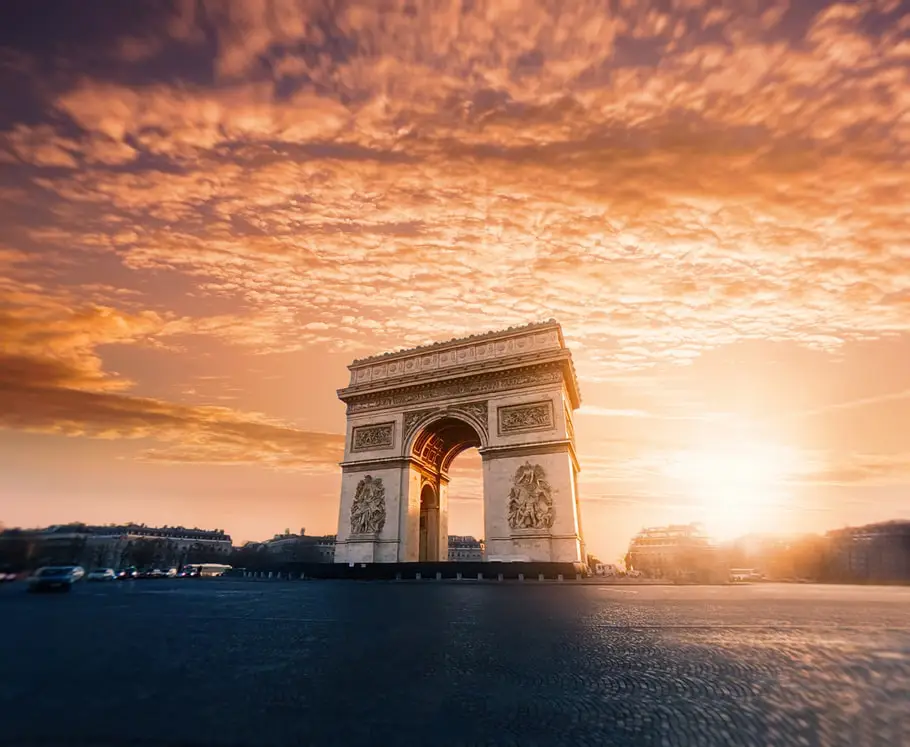
Most of the current structure of Paris is owed to Napoleon III and his rebuilding of the city center in the 19th century.
This planned downtown resulted in an incredibly high residential population, making it by far the most densely populated European city. From the banks of the Seine, near the Louvre, the Axe Historique stretches the length of the city to La Défense business district
This main artery of Paris sees the Bastille Day parade, under the Arc de Triomphe, celebrated each 14th of July. Other festivals include Paris-Plages, when the banks of the Seine are transformed into beaches; the Carnaval de Paris is one of the oldest, dating from the Middle Ages. The year-round festival that is Disneyland Paris is only 32 kilometers away.
The city is highly connected, with over 5 million passengers riding the Paris metro every day. This underground system connects Paris to its various neighborhoods or arrondissements. These are some of the richest and poorest areas of France, the 7th and 19th arrondissements, respectively.
In such a big city, you can imagine choosing the best hostels in Paris is difficult Luckily the fabulous metro system helps to connect distant parts of the city with ease – but the location is still very much key here.
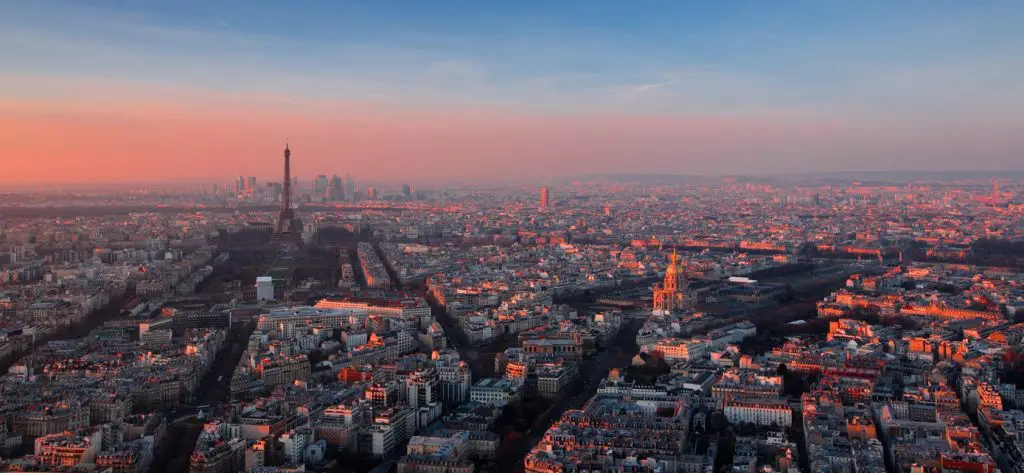
Culinary Attractions Of Paris
Paris is at the heart of French cuisine and the birthplace of haute cuisine, codified in the city by Marie-Antoine Carême at the start of the 19th century. This reputation, along with ranking consistently in the Top 3 most expensive cities, has placed Paris on the frontline of culinary innovation.
There are at least 10 three-star establishments, with hundreds more listed in the Michelin Guide.
The city is home to over 9000 restaurants, covering every French regional, and international cuisine. There is also a heavy influence from the former French colonies, the smells of North Africa are common in many parts of Paris. A certain ingredient brought from Turkey, once thought exotic, would come to define another aspect of Parisian culture.
Coffee arrived in the 17th century, a tradition brought from the Ottoman empire. This birthed the rise of the Café, now numbering in the thousands throughout Paris. Since their inception, they’ve played a major role in Parisian culture and politics, akin to British public houses (pubs). Café Procope is one of the originals, founded in 1686.
Another culinary institution was also invented in Paris; the bistro, Russian for ‘quickly’, stems from the time of Russian occupation in 1814. The concept was to quickly feed the soldiers, a modest meal in simple decor, at a reasonable price. Unfortunately, classic bistros are a dying breed due to the style being priced out of the competitive industry.

Paris In A Day
Any day spent in Paris will be memorable, but if you only have a few hours, the Eiffel Tower is the obvious choice. While it might seem cliche, it’s arguably the best view of the Paris skyline and much more impressive than you’d think when you see it for real.
- Eiffel Tower: Originally constructed for the Universal Exposition of 1889, it has now become one of the iconic symbols of Paris and France. Made of wrought-iron, it stands at 324 meters, the tallest building in the city; for 41 years, it was the tallest structure in the world. The top platform affords a view from 276 m, while the lower two platforms house restaurants.
- Arc de Triomphe: The hallmark of Avenue des Champs-Élysées, in the center of the expansive Place Charles de Gaulle. Commissioned by Emperor Napoleon at the height of his power, it memorializes the soldiers who fought in the Revolutionary and Napoleonic wars. Murals of heroes, and the names of generals and battles, cover the famous monument.
- Musée d’Orsay: An art museum housed in a former Beaux-Arts railway station that dates just a few years after the Eiffel Tower. It features primarily French artists dating from the pre-war period. Its collection of Impressionist and post-Impressionist art is unsurpassed in the world; masterpieces from Monet, Manet, Degas, Renoir and even van Gogh are on prominent display.
Just across the river, on the Champs-Élysées, lies one of the oldest restaurants in Paris still in operation. Housed in a two-storey pavilion among pristine gardens, Ledoyen has roots that reach back to 1779.
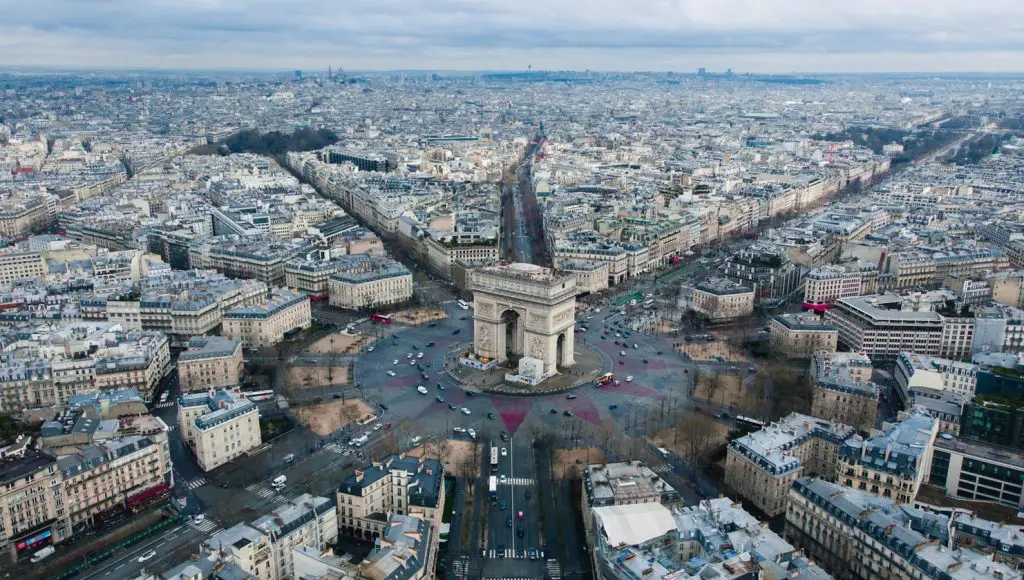
- Alléno Paris au Pavillon Ledoyen: Considered to be one of the finest dining experiences in the world, be sure to book this 3-star restaurant well in advance. They’re only open for dinner and the cost will be outrageous, but it will be a once-in-a-lifetime culinary experience. Their one-star sushi bar, Abysse, is open for lunch.
- Brasserie Les Deux Palais: Nestled at the center of Île de la Cité, between Sainte-Chapelle and Notre-Dame, this is a quintessentially French Brasserie. Breakfast, lunch, brunch and dinner, all at a reasonable price in a classic bistro environment. They’re a cash-only operation, but their extensive menu is going to have something for everyone.
After savoring the best of French cuisine, a walk around the ancient city-center is the best way to digest. The Île de la Cité, in the Seine, is the historic heart of Paris; strolling the streets is like taking a step back in time.
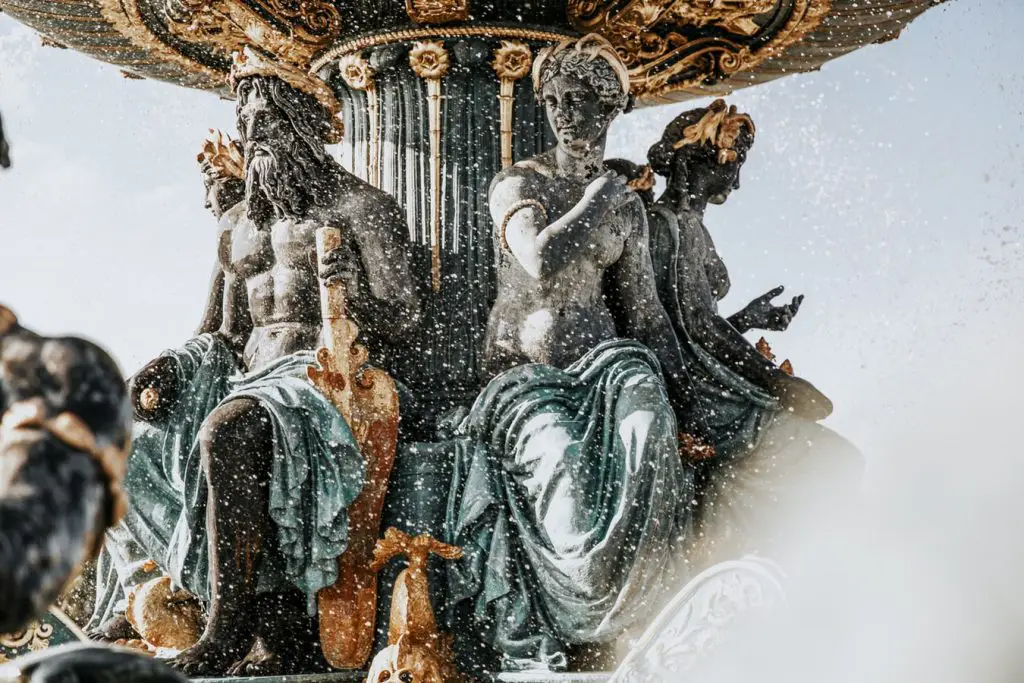
- Notre-Dame: While it isn’t accessible after experiencing a catastrophic fire in 2019, the cathedral is still as impressive and imposing as ever. Built-in 1163, it is the most popular tourist destination in Paris. Until repairs are made to the structure, consider walking a few blocks to Sainte-Chapelle – considered to be the pinnacle of Gothic architecture.
- Centre Pompidou: Among other things, the modern Centre Pompidou is home to the Musée National d’Art Moderne, the largest collection of modern and contemporary art in Europe. The building is designed in the ‘high-tech’ fashion; it was the first major example of an ‘inside-out’ structure in architectural history.
- Louvre: Hands down, the most famous and popular art museum in the world, with 10 million visitors per year. Even the building itself is a work of art, with its towering traditional facade juxtaposed against the iconic pyramid. If you want to see the Mona Lisa up close, expect quite a long wait; even if you don’t get a chance, there are masterpieces wherever you look.

Just walking around Paris is breathtaking; you don’t need to spend a dime in one of the most expensive cities in the world to have a memorable experience. Experiencing Paris in one day may seem like an intimidating feat, but it is more than possible with some careful planning.
Make sure to prioritize exactly what you’d like to see, everything in the city seems to capture much more of your time than you’d expect.
If you have more time after you might consider using your Eurail to explore nearby cities like Dusseldorf, Amsterdam, Brussels or Eindhoven. Further afield – we also love Vienna, Stockholm, and Tallinn … but this is Europe, as your options are basically unlimited.
